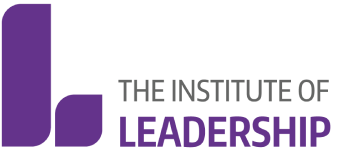While they navigate daily complexities, one of the biggest questions that leaders must learn to answer is: “Am I just putting quick fixes on my organisation’s problems – or genuinely managing its polarities?”
So, what do I mean by ‘polarities?’ Let me explain – but I will need to borrow your lungs for a moment or two…
Okay – first of all, try breathing in as much as you possibly can. Keep inhaling until you feel that you have completely filled your chest. Now, once you have all that air inside you, hold your breath. Do not exhale. Make a concerted effort to keep that air to yourself. And what you will start to feel is a tension – a stretching sensation inside that’s urging you to let go. Eventually, you will have no choice, because you need to release CO2.
Now – let’s try the opposite: keep exhaling until you feel that your lungs are completely purged. Go on – there’s always a bit of excess air hanging around in your lungs’ tissue. When you feel emptied, hold your exhalation. Don’t breathe back in just yet – see how long you can go. Much the same as before, you will start to feel an inner stretching. And soon enough, you will be forced to inhale once again, because you need to take in oxygen.
You have just had the physical experience of polarities: two opposites within a continuum – each dependent upon the other, and each having its own value.
Pockets of knowledge.
If you look at the complexities within our business environment, you will see there are always polarities. One example of how this may work is in HR. Perhaps a fast-growing corporate has a very centralised HR system, and a new CEO comes in. They look at the structure of the firm and say: “HR is a great team – but it’s not close enough to our people on the ground. At the pace we’re working, we need more direct support. So, we must decentralise HR.”
That amounts to little more than a quick fix: “HR is too concentrated in the centre – therefore, we must spread it out.” But what the CEO should really be doing is understanding that those states are polarities. Both of them (centralised and decentralised) have value. And indeed, both of them can be applied in different ways – for example, depending on the geographical region the company is working in. It’s not necessarily helpful to lurch from one extreme to another in an effort to land on a fix and move on. You must ensure the right pockets of HR knowledge are focused on the right areas and come up with an integrated answer – otherwise, the resources could be distributed too thinly to support performance.
That type of decision is a choice between merely fixing a problem and managing polarities. And we must manage and adjust polarities on a constant, rolling basis.
What’s particularly challenging for leaders is that in any organisation, polarities can be found at multiple levels. There is the need to drive rapid change and adopt agile working methods – but staff also require stability so they can understand their role and path in the business.
Then there’s speed of production versus quality: accelerating and experimenting with the way we deliver to customers may yield compelling results – but it could just as readily invite failure. Should we be risk taking, or risk averse? Global or local? And how do we deal with innovation versus efficiency, or short-term profits versus social responsibility? Plus, in a fast-paced environment, you as leader may want to apply controls to keep the business focused – but if you overdo those controls, the organisation’s reflexes could stagnate.
Along the axis.
Much of the key to managing polarities lies in leaders gauging their fear. One classic example is the tension between nurturing an empowered workforce and, again, looking to our old friend, control. We could give our employees space to try things out and develop their own ways of doing things – which could bring us fantastic results. But there’s a catch: as leaders, our fear of being liberal with empowerment is that the system could tip over into chaos.
At the same time, we must acknowledge that if we are too heavy handed with our control, we risk stifling all the innovations that could emerge from empowering our staff. And there’s much to fear in that regard, too.
In polarity thinking, the real question is not about choosing between empowerment and control – but how skilful we are at working along the axis. As long as you are gripped by a fear of chaos, you will not be able to take confident steps into empowerment. So, what you must do is embrace control and empowerment as equally valuable parts of a continuum – and acknowledge that, in order to make room for some potentially useful innovative thinking, you will occasionally need to accept some chaos.
Cause and effect.
Another, critical part of this approach is ensuring that you understand the fundamental differences between ‘complex’ and ‘complicated.’ For many people, the whole idea of putting a man on the moon is a complex operation. I would suggest it is not. It involves lots of complicated, intricate details – but in the end, it’s quite predictable. If you have a group of seasoned experts, they will all come up with the concept of attaching a landing module to a rocket. There may be some variations on what becomes of the rocket – eg, whether it’s discarded or reused – but every time, the chain of cause and effect is remarkably similar.
Complex, fast-paced scenarios are much more difficult to navigate: they’re unpredictable, and the chain of cause and effect is nothing like as clear. Importantly, they will often require organisations to experiment – and in that context, it is absolutely vital for leaders and their teams to work out a hypothesis: “What is it that we are trying to prove – or disprove – by undertaking this experiment?” A hypothesis acts as a guiding light or compass that provides the endeavour with a focal point and sense of direction. You may be able to obtain some clarifying data on the challenge at the heart of your experiment – for example, a powerful, new technology. You may be able to look at what other companies have done that may be similar to what you are about to do, and use that to inform your own research.
But in many ways, working in a fast-paced, complex environment requires you to have a mindset where you are absolutely okay with not knowing. And this is where polarities kick in once again: create an environment where your people can bring all their knowledge and expertise to bear on the challenge – and if two people say go right and one says go left, don’t neglect to listen to the minority view: there may be some truth in it.
Creating that healthy climate of discussion, experimentation and free exchange of ideas also requires leaders to navigate the axis from space to constraints. When you are working under pressure, there’s a risk that a client could demand results by an imminent date, you see that the outcomes of your work on the challenge are not what you hoped or expected – and so, with just a few days left to go before the deadline, you decide to be the master: assuming control of the process and treating the complex challenge as complicated to arrive at the quickest fix.
In that event, the system of harnessing everyone’s input collapses – and you go back to a controlled environment in which you as leader make all the big calls and everyone else follows. And that will squander your organisation’s valuable knowledge base.
Grow your team's skills, elevate your brand reputation and more, with our corporate solution.
Voices from our community: Marco Buschman is managing partner at coaching and leadership development specialists COURIUS and author of The Connection Quotient: How a culture of understanding transforms teams and organisations (LID, 2020).
Want to see more posts like this?
Get notified of great stories from our community, top tips and upcoming webinars & events.
Be recognised and get ahead.
We're a professional membership body. Join our community of over 50,000 leaders from around the world.

